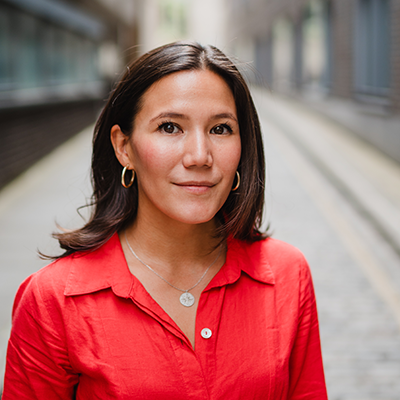How Boundaried Workers Impact Gender Parity and Career Progression
Discover who Boundaried Workers are, why they impact gender parity and career progression, and how organisations can unlock this overlooked talent...
Insights to help leaders and organisations thrive and drive growth & inclusion.
Geraldine Gallacher Keynote Speaker
Speaker, podcaster, author and master coach.
Our resource hub for working parents, carers and managers navigating work-life balance.
Real stories from leaders driving inclusion & equity in today’s shifting world.
Fortnightly insights on leadership, equity & the future of work. For senior leaders & curious thinkers.
A monthly digest of the shifts shaping how we lead and work.
3 min read
 Nicole Dainton | Marketing Manager
:
Jul 13, 2025 12:00:00 AM
Nicole Dainton | Marketing Manager
:
Jul 13, 2025 12:00:00 AM

Gender parity in leadership is stalling. Discover why women are overlooked for promotion and how rethinking talent can unlock equity and progress.
Understand more about the four talent pools described in our video by reading the explainers:
[FULL VIDEO TRANSCRIPT]
We would need to see thousands of women promoted right now to achieve anything close to real gender parity in leadership. ECC’s Research indicates that the number is around 20,000 women just in the banking and legal sectors in the UK, but the fact is globally there is also growing shortage of senior women that requires employers to rethink how they identify and nurture talent and address barriers to women’s progression.
McKinsey’s 2023 Women in the Workplace report confirms that the number of women in senior and board positions is shrinking. Already underrepresented in leadership positions, organisations are now struggling to hold on to their senior women. Leaders looking to the external recruitment market to solve the problem will be disappointed, a significant lack of senior women leaders makes this a fiercely competitive, expensive, and unsustainable option – but attributing the problem to the pandemic is a popular but an unhelpful response.
The pandemic did seriously aggravate an existing problem, but the pre-pandemic research had flagged that gender parity was going backwards. Today, despite two decades of initiatives focused on getting more women into senior roles it’s clear that two things aren’t working. Employers are failing to spot women talent and organisational practices and processes that feed vertical career progression continue to favour men while penalising women.
Women are promoted much less often than men, in part because they’re frequently downgraded in their leadership potential even though they’re high performers and go on to demonstrate their leadership capability. Research including a study from MIT of 29,000 managers has repeatedly evidenced this phenomenon. This means employers looking to accelerate progress first need an appreciation of how traditional approaches to internal talent management fail women and then work out what they can do to address the problem within their own organisation.
Women with the skill, experience and ambition for senior leadership haven’t disappeared they’re still there but overlooked because of the way organisations spot and nurture talent. For example extensive research by S&P Illustrated how c-suite women in the US Russell 3000 group had been held to the standard of the top 10 of their executive male colleagues.
Once a woman is overlooked and hasn’t been promoted by a certain stage in her life it gets harder because an assumption is made that it is a problem with the person rather than the way an organisation sees talent. And for the women they can end up in a bind. Decades of research has shown women that they are judged harshly for displaying male traits at work and that motherhood will most likely alter the trajectory and timeline of their career.
These combined new and legacy workforce issues mean that fishing in one pool of typical or ‘traditional talent’ is no longer enough. So, where are all the senior women? The answers begin quite simply. It’s time to throw out using outdated models that also focus on a narrow tier of talent and instead grasp the opportunity available by reimagining your pool of potential talent.
By rethinking how you view talent you will tap into many more women in your organisation, women that have previously been overlooked or missed out because of bounded ways of working or may no longer feel they belong in your organisation.
To tap into these pools, start by asking yourself is the high potential employer a thing of the past? And are your processes really up to the task of assessing leadership potential without bias? The best organisations are finding ways to invest proactively and bypass flawed talent identification processes by building equity programmes that push development and stretch opportunities to many more women. Push the notion of leadership to more women in your organisation rather than the few to avoid excluding potential leaders of the future.
Act swiftly and creatively to begin to solve your inequity issue and whilst you may start with gender because women make up your largest untapped pools this reimagining of talent will help you to unlock potential across every other area of opportunity from social class to sexuality to race. [END]

Discover who Boundaried Workers are, why they impact gender parity and career progression, and how organisations can unlock this overlooked talent...

3 min read
The Lost Leaders Talent Pool Explained Background Gender parity is stalling at best and at worst going backwards. In the UK alone, ECC’s research...

The Overlooked Talent Pool Explained Background Gender parity is stalling at best and at worst slipping backward. In the UK alone, ECC’s research...